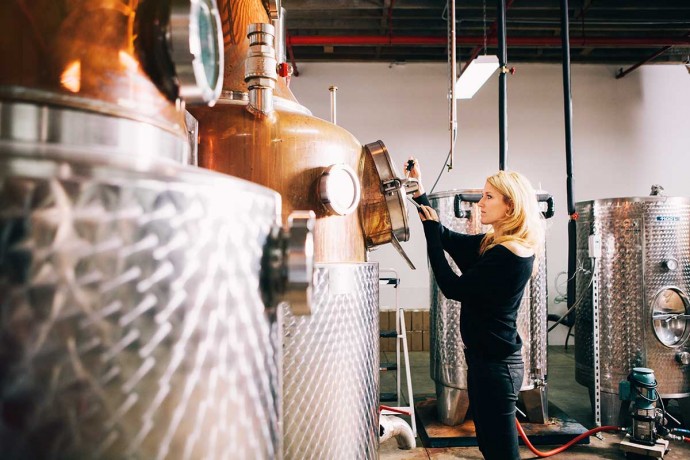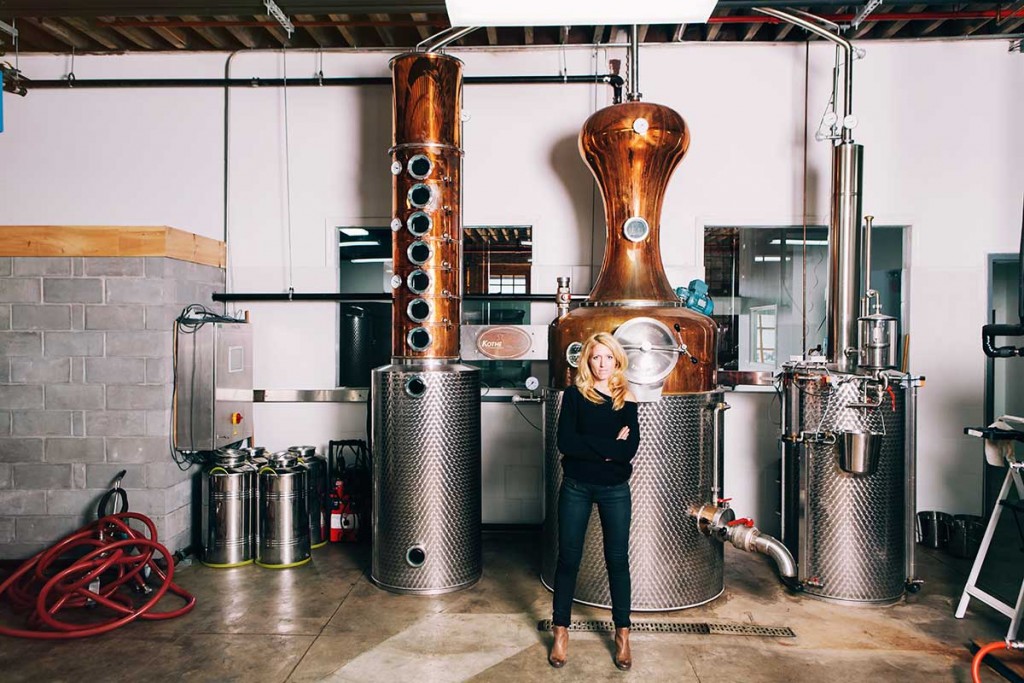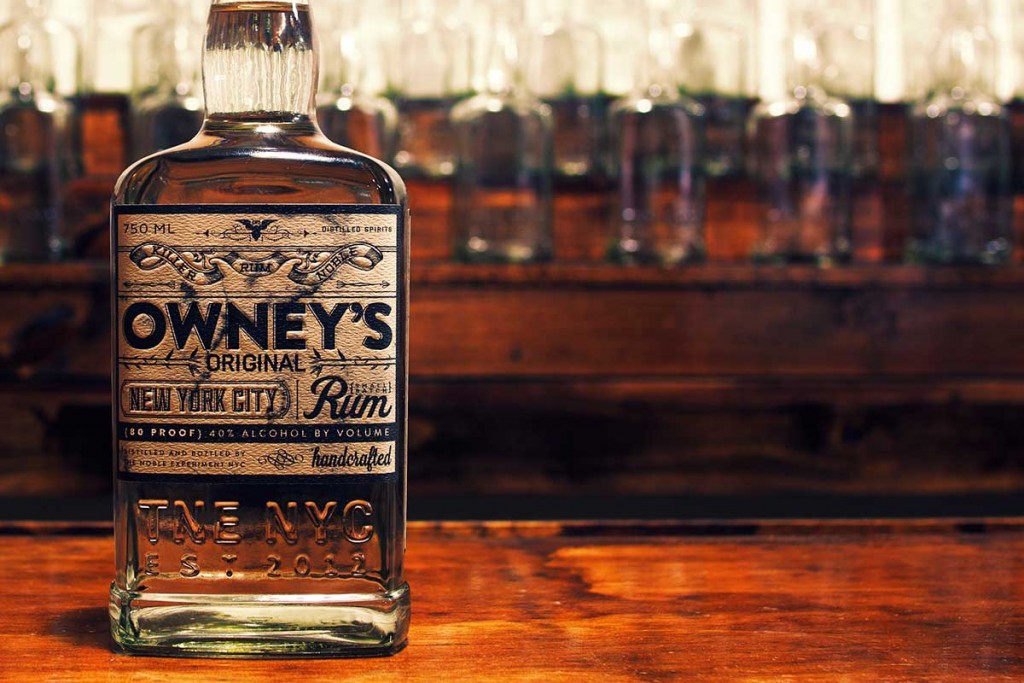If you asked most drinkers to name the oldest distilled spirit in North America, they’d probably say whiskey. After all, what’s more American than a good bourbon? They would, however, be incorrect—believe it or not, that honor belongs to its Caribbean cousin, rum.
Thanks to a steady decline in popularity following the colonial era and, eventually, Prohibition, American rum distilling all but evaporated by the early 1900s. But now, nearly a century later, a generation of craft distillers are working tirelessly to bring it back. Enter Bridget C. Firtle, a native New Yorker whose distillery, The Noble Experiment (an ironic reference to the teetotaling ‘20s), is leading the charge in Brooklyn with Owney’s Rum.
A Modern-Day Rum Runner
Like so many artisanal distillers, Firtle’s background is only tangentially relevant to the world of craft spirits. After studying finance in both undergrad and grad school, she went to work as a consumer products analyst at a hedge fund, studying the performance of stocks related to food, beverages, and household goods. She gradually carved out a niche for herself analyzing global alcoholic beverage brands.
“In doing my research and investment analysis for the big, multinational spirits and beer companies, I was watching the trends and what was happening on the small scale,” Firtle told us recently. “I became really excited with the research into domestic distillers and this industry that was having a rebirth for the first time in almost a century, and how people behind the distilleries were trying really interesting new things. I was way more excited about that whole side of the business than I was about being an industry analyst.”
Being a fan of rum herself, she was dismayed to find that it was severely underrepresented in the craft spirits market. Sales were dominated almost entirely by big brands like Bacardi and Captain Morgan, and most domestic distillers were focusing on whiskey, vodka, gin, and even brandy.
“The first distillery on record in the US was on present-day Staten Island in the 1660s, right here in New York City, and they were a rum distillery. So I had this silly little dream to bring rum distilling back to my hometown. Now, we’re the first rum distillery in New York in 92 years.”
The Noble Experiment Itself
Of course, it’s not much of a distillery if it doesn’t produce a spirit worth drinking, so after quitting her job on Wall Street, Firtle set out to devise a recipe that would satisfy even her own choosy palate. Luckily, she wasn’t exactly going in blind.
“The nature of my brain is math and science. I actually started undergrad in pre-med, so going back to my roots of studying fermentation science and biochemistry was exciting to me,” she said. “To be honest, I initially thought I’d get a consultant or hire a distiller and try to outsource that piece of the puzzle, but the more I thought about it and the more I looked around the industry I realized there was really no one out there that I really wanted or could afford.”
When asked how she was able to dive into a new business so confidently, she laughed. “I realized that ninety-plus percent of the distillers popping up around the country had never done it before, so I thought if they can do it, I can, too.”
After a good deal of trial and error, Firtle settled on the formula for their flagship white rum. It’s a simple one at first glance, consisting of only three ingredients—Grade A, non-GMO molasses sourced from Florida and Louisiana, a proprietary strain of yeast, and New York City water—but a lot of care went into crafting its subtleties.
Owney’s Rum is Born
“We think a lot of distilleries neglect the power of fermentation to enhance and characterize a spirit, because they either strip the alcohol out to a totally neutral spirit during distillation and don’t care about any of the flavor that came before, or they use sugars, artificial flavors, or a barrel to give their spirit complexity,” she told us.
“So we flip that on its head and say, we’re actually going to think about what happens during fermentation, all the natural flavors that can be created through esterification, and then showcase them in the way we distill it.”
At the heart of The Noble Experiment is a gorgeous, custom-built, pot-column hybrid still that’s the key to their rum’s nuanced flavor profile. The hybrid design allows Firtle to balance the benefits of each method—pot stills tend to create a funkier, less refined distillate, while column stills can often strip those flavors out to an extreme.
“Our still has a six-plate column to get some sort of rectification, so it’s palatable and enjoyable in an unaged form. Not too foul,” she laughs, “but also not a 25-plate column that just produces a neutral alcohol.”
When deciding on a name for her product, Firtle again looked to history. She was intrigued, as many have been through the years, by the story of Owen “Owney” Madden, a notorious gangster and rum runner during Prohibition.
Nicknamed “The Killer” for his murderous temper, he wasn’t exactly the most admirable character in the city’s pantheon, but his role as a successful booze smuggler and the owner of legendary Harlem speakeasy The Cotton Club cemented his place in New York drinking history. With nostalgia for the roaring ‘20s at an all-time high in the world of cocktails and spirits, it’s easy to see how his name ended up emblazoned on every bottle of Owney’s Rum.
Fighting the Good Fight
As any entrepreneur can tell you, the less-than-sexy realities of life at a startup aren’t exclusive to Silicon Valley. “I think the number one challenge for every craft distiller is cash flow,” Firtle said. “There’s never enough cash, and it’s a very expensive business, especially if you have the dream of becoming a national brand like I do. You’re competing with marketing budgets of hundreds of millions of dollars.”
And, in the end, running a distillery comes down to a whole lot of thankless manual labor. “There are always the day-to-day challenges of having a manufacturing space. On Monday, our forklift just up and died, and it’s dead now, and it’s going to cost seven thousand dollars to get a new battery,” she told us with a resigned chuckle. “So we’re filling the tanks manually now until we save up enough money to fix it.”
Despite all the late nights and unforeseen expenses, though, Firtle is just as passionate now as she was when she started three years ago—she’s just a little less naive. “You look at your original business plan after a couple of years and you just laugh. I had no idea what I was doing. But I think you need to have that in order to do something this crazy, because if you knew what you were getting yourself into you’d never do it.
“So, there have been a lot of surprises. On the plus side, there have been a tremendous amount of accolades, awards, press, and people love the product. The success has been unimaginable. But my biggest learning experience has been that it always takes twice as long and costs three times as much as you initially thought it would. That’s just the breaks of the game and the breaks of starting a business.
“I mean, a lot of the big brands have existed for literally hundreds of years, with big, seemingly insurmountable marketing machines behind them. So we’re pretty happy with where we’re at after year three,” she says, grinning mischievously. It’s clear that Bridget Firtle has no doubt she’ll soon be the one making the big guys sweat.
All Photos: The Noble Experiment





